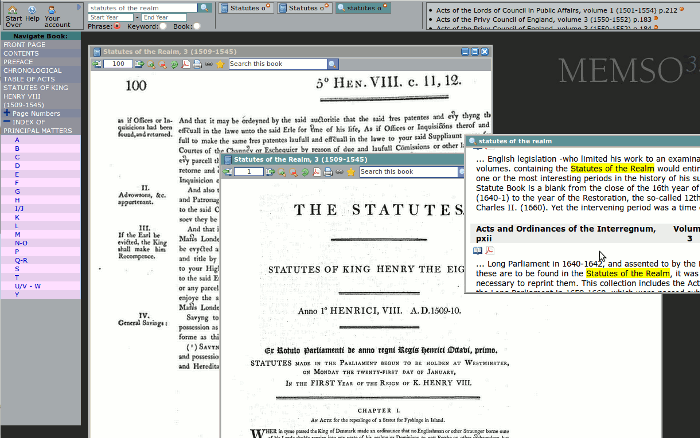 |
| James VI in 1595 |
|
On 23 October 1589, the Scottish Privy Council assembled in Edinburgh (From
Register of the Privy Council of Scotland, volume 4) and heard several documents read by the Clerk Register from their king, James VI. The first was a Will for the future government of the kingdom, and the second, a Declaration explaining the reasons why such a Will was necessary. James was leaving to embark on a rather uncharacteristic and
ostensibly romantic quest. Although James knew that this was not the most prudent thing to do in light of the factional politics and disorder that had undermined the strength and stability of his realm, he needed to go. He needed to rescue his bride, Anne, and bring her to her new home.
The marriage treaty between James VI and Anne, daughter of the late Frederick II of Denmark, was formally concluded in July 1589. For her part, the 15 year old Anne was quite smitten with her future husband – no doubt sheltered from the persistent rumours of James’ sexual orientation(s). The marriage took place by proxy on 29 August at Kronburg Castle, with the Earl
Marischal standing in for James VI – even so far as sitting on the marriage bed to consummate the marriage symbolically. Ten days later, Anne embarked for Scotland, where dates had been set, and elaborate arrangements made, for her arrival at the port of Leith, entry into Edinburgh, and formal marriage ceremony with James himself.
 |
| Anne of Denmark in 1605 |
|
Anne’s voyage from Denmark to Scotland, however, was not clear sailing. Stormy weather and contrary
winds had separated her fleet and drove the Princess’ ship to the Norwegian coast. Although some of her fleet had arrived in Scotland, there was still no sight of Anne. With the day of the appointed marriage come and gone, James’ impatience turned to worry, and on 2
October, he sent out a search party. Colonel Stewart’s delayed return led to a further period of ‘fear of disaster; omens; public fast and prayer’. Finally, messengers arrived from Denmark, informing James that Anne’s fleet had been driven back twice, her
ship the Gideon had sprung perilous leaks before and after
repairs, and had finally taken refuge on the coast of Norway as it
was deemed too dangerous to try again for a third time. The question
was now whether Princess Anne should return to Denmark and winter
there, attempting the voyage to Scotland again in the spring, or try
again now. Indeed, this had become a matter of great contention
between the Scots and the Danes. James, however, had other ideas.
And so it was on 23 October, the Privy Council of Scotland learnt of the news that James VI was leaving on a quest, to fetch his bride personally.
Quhairupoun, eftir lang treaty and deliberatioun, contract being endit, the marriage be our ambassador in our name solmpnizat, and the Quene, oure espoused wyffe, accumpanyed with the navy of oure darrest bruthir the King of Denmark and certane of his cheiff officiaris and counsaill appointed to convoy hir towardis us, being on the seyis halding their course hither, have bene divers tymes be stormes and contrarious wyndis sett in Norroway, - quahir deliberatioun being had anent hir returning in Denmark or tarrying still in Norroway upoun mair favourable wind and weddir and sum further provisioun towardis hir transporting, hir awne chois and lykeing best aggreing with the last conditioun, - We, to quhome hir bipast panes and dangeir hes bene no les grievous nor giff we had sufferit thame in our awne persone, finding that nothing can be mair hurtfull to us and oure estate nor giff the consummatioun of oure marriage and the transporting of the Quene oure bedfellow in oure realme salbe differed, and that hir affectioun towardis us, having sa effectuallie kytheit, meritis to be rememberit and acquite with na les goodwill on oure pairt; quhairthrow, thinking to mak the process schoirtair, and to obviate the difficulties objected concerning hir transporting befoir the nixt spring, eftir we had resolvit to send in Norroway a noumer of oure counsaill and officiaris that voluntarlie offerrit to bestow thameselffis and their geir in furtherance of this eirand, we fand yit na contentment of mynd quhill we concludit to interprise the voyage in proper persone [ie himself], thinking, be Godis grace, to performe the same and fra in [ie within] tuenty dayis, wind and wethir serving.
James was going himself, and set out in explicit detail provisions for the future government of the realm in his absence. But what is, perhaps, of greater interest is what followed next – a Declaration, written by James VI himself, explaining the personal reasons behind his decision to fetch his ‘bedfellow’ and consummate his marriage.
In respect I knaw that the motioun of my voyage at this tyme wilbe diverslie skansit upoun, the misinterpreting quhairof may ten alsweill to my grite dishonour as to the wrangous blame of innocentis, I have thairupoun bene moved to sett doun this present Declaratioun with my awne hand, heirby to resolve all gude subjectis first of the causes breiflie that moved me to tak this purpois in heid, and nixt in quhat fassioun I resolved myself thairof.
As to the causes, I doubt nocht it is manifestlie knawne to all how far I wes generallie found fault with be all men for the delaying sa lang of my marriage. The ressonis wer that I wes allane, without fader or moder, bruthir or suster, king of this realme and air apperand of England. This my naikatnes maid me to be waik [weak] and my inemyis stark; ane man wes as na man, and the want of hoip of successioun bread disdayne; yea, my lang delay bred in the breistis of mony a grite jealosie of my inhabilitie, and gif I wer a barrane stok.
While it is true that the primary duty of any sovereign, male or female, is to produce heirs to the throne to secure the line of succession and, consequently, the stability of the realm, James loved the life of a bachelor, the company of men and other such manly pursuits. So, to blame the fact that he took so long to marry on his family (or lack thereof) was a little disingenuous. But, it is reassuring that the pressure to marry and produce heirs wasn’t only a problem associated with queenship. Moreover, it is tempting to read into first, James’s choice of language and second, his reaction to the gossiping and contempt regarding his failure to marry, as sensitivity to rumours of his homosexuality (or as it would have been termed at the time, his preference for male company and apparent disinterest in women). He repeatedly refers to Anne as his ‘bedfellow’, a term that might be interpreted as deliberately emphasizing the heterosexual nature of the relationship. Thus, while one of James’s earliest biographers, Arthur Wilson, saw James’s journey as ‘the one romantic episode of his life’, here he seems to be objecting that he has been pushed into marriage sooner than he had hoped by malicious gossip, and can find no peace until the marriage has been consummated.
Thir ressonis, and innumerable otheris hourly objected, moved me to hasten the treaty of my marriage; for as to my awne nature, God is my witness, I could have abstenit langair nor the weill of my patrie could have permitted. I am knowne, God be prased, not to be very intermperately rashe nor concety [flighty] in my wechtiest effearis [weightiest affairs], nather use I to be sa caryed away with passioun as I refuse to heir ressoun.
In an attempt to convince his Council that he was not influenced by any one, or any particular faction to undertake such an uncharacteristic mission, James took pains to assure his counsellors that he came to this decision alone – ‘not ane of the hail Counsale being present ... And, as I tuke this resolutioun onlie of myself, as I am a trew Prince, sa advised with myself onlie quhat way to follow furth of the same.’
Hence the reason this voyage was kept so secret:
Fra the tyme of the making of this offer, have evir kepit my intentioun of my going asl clois as possiblie I could frome all men, because I thocht ay it we aneuch [enough] for me to putt my fute n the ship quehn all thingis wer redy without spearing of further [ie any further debate or enquiry]. As I kepit it generallie clois fra all men, sa I say, upoun my honour, I kepit is sa from the Chancellair.’ Because if he had informed him, he would be ‘blameit of putting it [in] my heid’.
James sailed from Leith and arrived in Oslo on 19 November, where they were married in a formal ceremony four days later. The newlyweds wintered in Norway and Denmark, before setting sail for Scotland in the spring. They arrived at Leith on 1 May 1590, and Anne made her entry into Edinburgh on 5 May – in a coach of silver brought over from Denmark. Scotland’s new Queen was crowned on 17 May at Holyrood, which was of particular significance because it was Scotland’s first ever Protestant coronation. The ceremony was also controversial, particularly with the kirk ministers. James insisted that rituals dating, he claimed, to the Old Testament be incorporated in the ceremony – namely, the opening of the Queen’s gown so that her breasts and arm could be anointed with oil.
 | George Villiers, duke of Buckingham, was James VI & I's final favourite. James described him as 'sweet child and wife' and a secret passageway was built between Villiers' bedroom and James' at Apethorpe Hall, which was only discovered in 2004/8. Nevertheless, there is no unambiguous evidence that James' relationships with his favourites was other than platonic. |
Unfortunately, James and Anne’s marriage was not characterised by ‘smooth sailing’ any more than the first months of their marriage. Their marriage was fractious and, although they had four children, they spent most of their lives apart, especially after James inherited the throne of England. Moreover, even the ‘romantic’ journey to Norway and apparently genuine initial infatuation of James VI for Anne after her arrival in Scotland did not permanently dispel the gossip regarding James’ preference for male company, especially when it took three years for Anne to become pregnant. The eventual birth of seven live children helped quieten the rumour-mongers again, but the king’s intimate relationships with male favourites, and perhaps the 21st century need to assign people from earlier periods to categories that would have been meaningless at the time, mean that the question of James’s sexuality remains today.





















